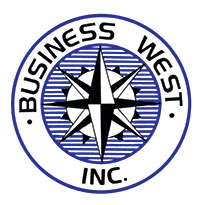The Mid-America Regional Council earlier this year released an economic development study and suggested strategy for the K-7 corridor. The 13-mile area stretches from the City of Leavenworth on the north to the Bonner Springs.
K-7 began as a two-lane road that linked Kansas City with northeast Kansas cities; it became a four-lane highway in the mid-1960s.
A group of public and interested private-sector interests have attended meetings for the past few years in developing a “growing together” strategy for the corridor. Representatives included those from the cities of Basehor, Bonner Springs, Lansing, Leavenworth along with those from Leavenworth County, the Leavenworth Port Authority, the Kansas Department of Transportation and the Kansas City, Kansas, Area Chamber of Commerce.
One of the main purposes of the plan is to assure the highest and best development along the corridor. This corridor offers several opportunities as it will become a major roadway for the northwestern area of greater Kansas City. It also has large “green spaces” that could allow for very well-planned development.
I don’t have to go very far in Greater Kansas City to find examples of bad development. Check out Metcalf Avenue in the older parts Overland Park, North Oak Trafficway in Gladstone or the older areas along State Avenue. Here you will see buildings crammed together, much too close to the curb. That is ugly and traffic moves slowly.
The K-7 corridor, particularly the area in Wyandotte County, offers an excellent opportunity for high quality development. Representatives of cities and counties along the corridor have signed agreements generally supporting the objectives in the K-7 report. There is a commitment for design guidelines that should result in quality development.
I can look back some 20 years ago. It probably would have been impossible to have convened such a group of public officials. Assuming you could have got them in the same room, they probably would have argued only about petty provincial matters. That did not mean that provincial attitudes didn’t still pop up from time to time in the most recent K-7 meetings. However, in the end, representatives agreed on more issues than they disagreed.
One of the more reluctant representatives in this study was the City of Bonner Springs. Bonner officials are leery of a freeway plan that would interfere with existing retail development in the area of Kansas Avenue. They want to protect large sales-tax generators such as Wal-Mart.
Unfortunately, bad development decisions were made in Bonner Springs in the 1970s and 1980s that allowed buildings much to close to the K-7 roadway. However, there are alternatives to a full-blown freeway that would allow traffic to move in a relatively expedient manner. Bonner officials should consider such alternatives.
The study looks at population trends until 2040. By then, it is estimated that the Piper community would have 27,752 residents. The 2010 census reported that Piper had a population of 8,658.
The study also notes that there will be substantial growth in the 85 and older demographic. There will be a considerable need for independent and assisted living developments.
 The encouraging aspect of this K-7 study is that there has been cooperation from all of the public entities along the corridor and agreement that guidelines will be followed that will help assure quality development. That has been something that has been lacking in past years.
The encouraging aspect of this K-7 study is that there has been cooperation from all of the public entities along the corridor and agreement that guidelines will be followed that will help assure quality development. That has been something that has been lacking in past years.
Murrel Bland is the former editor of The Wyandotte West and The Piper Press
and is the executive director of Business West.
